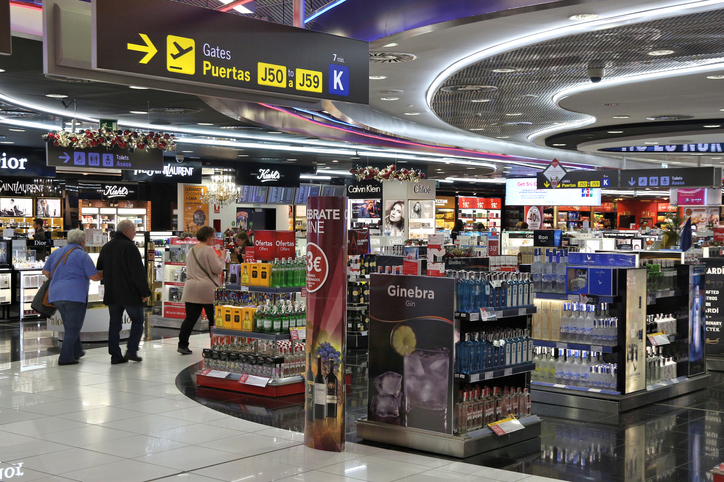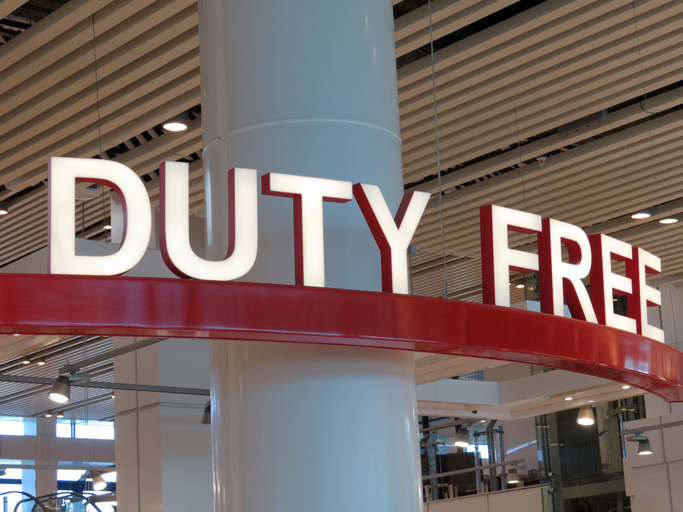Tourism represents a high percentage of the Gross Domestic Product (GDP) of many countries, which has a significant economic impact: this is the case in Spain, with this figure currently sitting at around 16%.
The tourism sector is continually evolving, with new generations considering travel as somewhat obligatory. The vast majority of these trips entail significant retail activity.
According to the report entitled ‘Travel Retail: the sixth continent’, this sub-sector generated more than 61.6 billion dollars in 2018, with fragrances and fashion items being the main retail niches.
To gain an understanding of the origin of travel retail, we need to travel back in time to the late 1940s. In 1947, Shannon Airport (Ireland) was granted the first license to sell tax-free goods. Shortly after, in 1951, the first duty-free liquor store was opened.
With tourism soaring, the 1960s saw the expansion of tax-free shopping options. Since then, running parallel to the development of tourism itself, duty-free shopping has continued to grow and grow.
The term ‘travel retail’ is not only used for tax-free items; instead, it’s used for all retail activity carried out during a trip.
In addition to airports, duty-free stores can now be found on international cruise liners, in train stations, free trade zones, etc.

This sub-sector has undergone the same highs and lows as the tourism industry itself, with fewer purchases being made in periods of touristic instability, such as after the 9/11 terror attacks.
Despite this, the duty-free phenomenon expanded seven-fold between 1985 and 2017, with 68.5 billion dollars being spent in 2017.
Travel and globalisation
The globalisation of tourism and the fewer barriers to travel have had various consequences. One such result is that many more people are now choosing to travel. A second consequence is that the new “tourists” are often forced to travel on a budget.
Duty-free businesses have had to position themselves differently to attract more customers, owing to several significant factors. Namely, the increase in low-cost airlines, more tourists from poorer countries choosing to travel and the travel bug that has sunk its teeth into the millennial generation (who are keen to travel but have limited disposable income).
Duty Free World Council
These are just some of the challenges faced by the Duty Free World Council, which is responsible for monitoring and regulating the existing legislation in multiple countries.
According to its website, one of the current problems faced by the Duty Free World Council is how Brexit will affect returns. In this sense, the DFWC acknowledges that “one of the few positive aspects” of this decision is that, as European Union citizens, tourists travelling to and from the United Kingdom will be able to exercise their right to return products; if the UK becomes a non-EU country, however, this rule will no longer apply.
This is something that the DFWC states “could bring considerable commercial benefits for the aviation and maritime industry”.
Another problem faced by the DFWC relates to the rules regarding the number of bags that can be brought on board by tourists, with this varying depending on the airline and country. The ‘one-bag-only’ rule is often relaxed, with passengers able to board with additional duty-free bags. Under certain circumstances, however, the tourist is forced to fit their purchases inside their regulation-size suitcase. The Duty Free World Council stresses the need for an amendment to the current legislation, ensuring that customers do not incur charges for this type of purchase and thus avoiding a drop in business for duty-free establishments.
Top-selling products
The institution states that the most notable purchase drop-off is found in tobacco products. Between 2003 and 2014, a 10% decrease was noted in the sale of these products. However, they claim that tobacco is still worth purchasing in duty-free as it has “good profit margins” for the seller. Furthermore, this type of consumer is more likely to purchase other types of products.
Another category of product to have experienced a decrease in sales during the same period is that comprising wine and alcoholic drinks (4%), whereas sales of fashion items and accessories increased by 8%.
As mentioned above, first place is occupied by fashion items and accessories: this category comprised 23% of all duty-free sales in 2003, reaching 30% in 2014.
Income from duty-free shopping also benefits the airports themselves. Standard rental periods for shop space range from 5 to 8 years, with this often being longer for duty-free spaces. These rental contracts often comprise a fixed rent with added variables, depending on the sales made in particular product categories and the number of passengers passing through each particular airport.
Sales objectives are also set in these contracts, with a share of the profit going straight to the airport if this figure is exceeded
AENA, for example, currently receives 27.7% of the commercial revenue deriving from duty-free shopping
AENA feels it is necessary to innovate and “diversify the offer” in order to compete with emerging low-cost retail outlets such as Primor, with these outlets making it less appealing to buy a tax-free perfume, for example, when these shops continuously offer products at knock-down prices.







